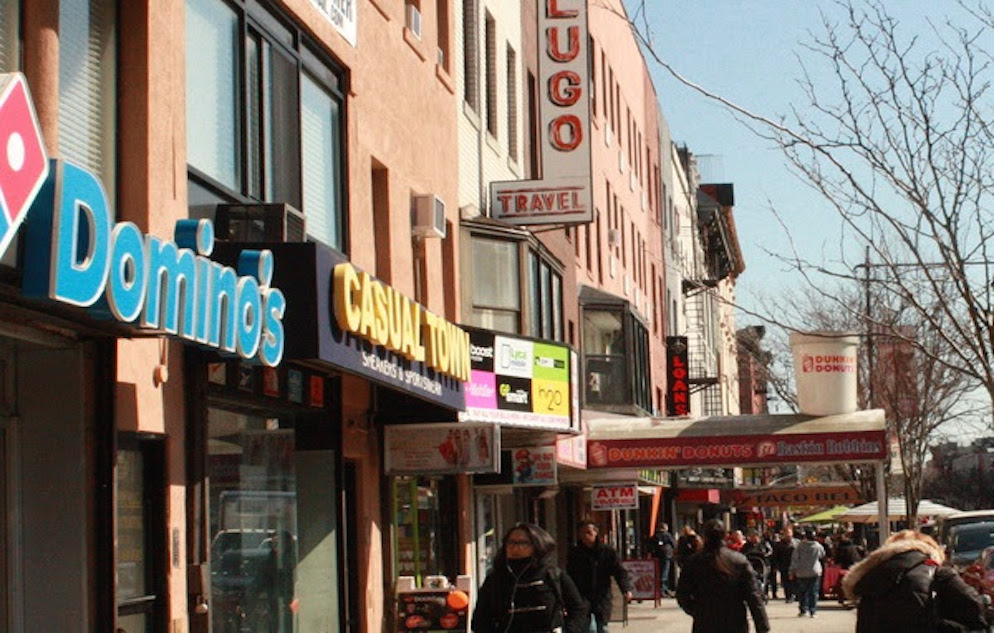For more information:
Nick.Freudenberg@sph.cuny.edu
urbanfoodpolicy@sph.cuny.edu
NEW YORK, March 28, 2016 — The CUNY Urban Food Policy Institute, a research and action group at the CUNY Graduate School of Public Health and Health Policy (CUNY SPH), today released a new report, Eating in East Harlem An Assessment of Changing Community Foodscapes in Community District 11, 2000-2015. The report shows that while access to healthier food has increased, East Harlem continues to experience high rates of food insecurity and diet-related diseases.
The report summarizes changes to East Harlem’s food environments and policies, covering food retail, food insecurity and public food assistance, school food and other institutional food programs, nutrition education, and diet-related health behavior and diseases. By analyzing the impact of private development and city policies in East Harlem during the Bloomberg Administration and the first two years of Mayor de Blasio’s tenure, the report provides the first assessment of long-term changes in access to healthy affordable food in East Harlem.

“We wrote Eating in East Harlem because we wanted to provide the people who live and work in East Harlem and policy makers with the evidence they need to make sure that 15 years from now East Harlem’s foodscape will better support the well-being of our community,” noted lead author Nicholas Freudenberg, Distinguished Professor of Public Health at the CUNY School of Public Health and director of the Institute.
Among its findings:
- Since 2000, the number of food retailers in East Harlem has increased by 42%, supermarkets by 80% and restaurants by 84%.
- About a third of East Harlem residents receive SNAP benefits (formerly “food stamps), a rate that has tripled since 2001; almost a quarter of residents are food insecure; and the number of food assistance programs has dropped from 44 in 2004 to 30 in 2014.
- School meals provide an important source of nutrition for children in East Harlem. Since 2000, the number of lunches served has dropped by 15%, largely due to enrollment declines, but the number of breakfasts served has increased substantially.
- More than 64 programs provide nutrition education in East Harlem, with more than half initiated after 2009. Populations that appear to be underserved by these programs include young children, recent immigrants, older people, and those with diet-related diseases.
- Two key indicators of dietary health have improved modestly in East Harlem in the last decade: the proportion of the population that meets the recommendations for daily fruit and vegetable consumption and the proportion who are consuming one can or less of sugary beverages a day. However, East Harlem residents continue to experience less healthy diets than residents of New York City as a whole and the proportion of East Harlem adults who are overweight or obese has not dropped in the last 15 years.
At a forum on the report on March 24, three East Harlem residents described how they are tackling the problems described in the report. Andy Almonte, a manager at East Harlem’s Super Fi FRESH Supermarket, discussed the efforts of his store to make healthy affordable food more available to the neighborhood. A resident of New York City Housing Authority’s Johnson Houses, he also explained how he is learning about nutrition from his children and applying that knowledge to improve the diets of family members who have diabetes. Susan Rodriquez, the founder of SMART University, an East Harlem organization that provides nutrition education and cooking classes to women with HIV, diabetes and other conditions, explained how the program empowers participants to make changes in their diet and their neighborhood’s food environments. Finally, Carey King from New Harlem East Merchant’s Association described how small businesses are working to improve food choices along 125th Street while coping with the intense development that rezoning has encouraged.
The report was prepared by a team of 10 faculty and student investigators at the CUNY School of Public Health and the New York City Food Policy Center at Hunter College based on publicly available data, government and advocacy group reports and interviews with East Harlem residents, food activists and health professionals.
An Executive Summary of the report is available at www.eatingineastharlem.org and the full report will be posted there by early April.
# # #
About the CUNY Graduate School of Public Health and Health Policy
The CUNY Graduate School of Public Health and Health Policy (CUNY SPH) promotes health and social justice in New York City and across the globe through innovation and leadership. The mission of the School is to provide a collaborative and accessible environment for excellence in education, research, and service in public health, to promote and sustain healthier populations in New York City and around the world, and to shape policy and practice in public health for all. More information at sph.cuny.edu.




